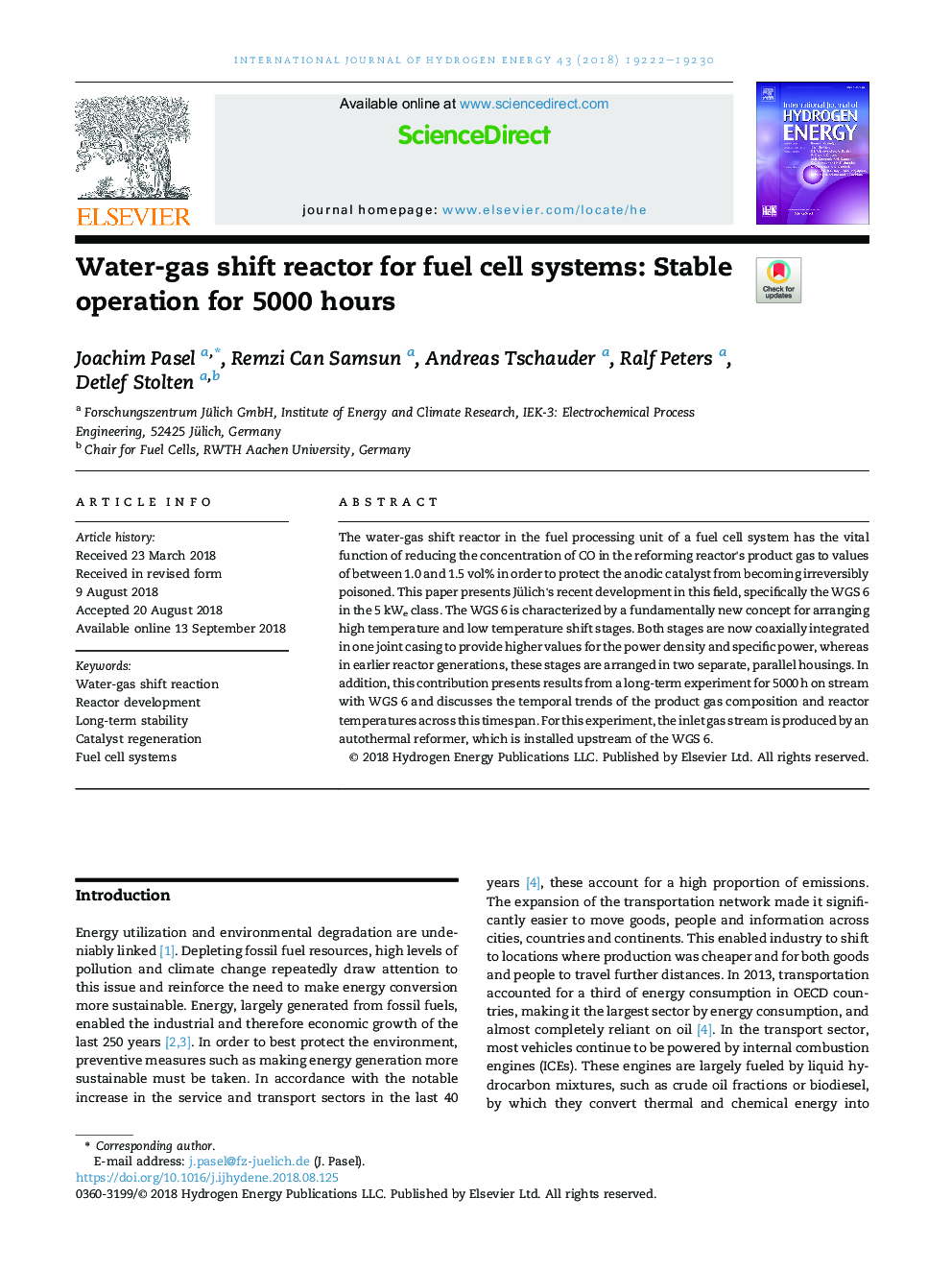| Article ID | Journal | Published Year | Pages | File Type |
|---|---|---|---|---|
| 11011672 | International Journal of Hydrogen Energy | 2018 | 9 Pages |
Abstract
The water-gas shift reactor in the fuel processing unit of a fuel cell system has the vital function of reducing the concentration of CO in the reforming reactor's product gas to values of between 1.0 and 1.5Â vol% in order to protect the anodic catalyst from becoming irreversibly poisoned. This paper presents Jülich's recent development in this field, specifically the WGS 6 in the 5Â kWe class. The WGS 6 is characterized by a fundamentally new concept for arranging high temperature and low temperature shift stages. Both stages are now coaxially integrated in one joint casing to provide higher values for the power density and specific power, whereas in earlier reactor generations, these stages are arranged in two separate, parallel housings. In addition, this contribution presents results from a long-term experiment for 5000Â h on stream with WGS 6 and discusses the temporal trends of the product gas composition and reactor temperatures across this timespan. For this experiment, the inlet gas stream is produced by an autothermal reformer, which is installed upstream of the WGS 6.
Keywords
Related Topics
Physical Sciences and Engineering
Chemistry
Electrochemistry
Authors
Joachim Pasel, Remzi Can Samsun, Andreas Tschauder, Ralf Peters, Detlef Stolten,
